1.- Input Image
A=imread('001.jpg');
hf=figure(1);
ax=gca
imshow(A);
2.- Adjusting Contrast
th_low=.3 % low contrast threshold
th_high=.7 % high contrast threshold
A2=imadjust(A,[th_low th_low th_low; th_high th_high th_high],[]);
Without adjusting contrast there's some 'ringing'.
Showing what I call 'ringing' along a sample cross section

hold(ax,'on');
plot(ax,[130:190],200,'b*')
figure(2);
stem([130:190],A(200,[130:190],1),'Color','r');
grid on
hold on
title('without contrast adjustment')
stem([130:190],A(200,[130:190],2),'Color','g');
stem([130:190],A(200,[130:190],3),'Color','b');

figure(3);
stem([130:190],A2(200,[130:190],1),'Color','r');
grid on
hold on
title('with contrast adjustment')
stem([130:190],A2(200,[130:190],2),'Color','g');
stem([130:190],A2(200,[130:190],3),'Color','b');

The variance of a cross section of the are of interest is far lower
along inside the are of interest, and the endges are sharper, after improving contrast
3.- Take Single Point reference inside area of interest
I know you'd like it without any interaction, who would disagree.
However, a single point is only to skip discerning the area of interest, the targeted strip.
Such sorting is not difficult, but laborious and I hope you agree upon the fact that such classification would need at least another question, for instance: That would be 'find among this segmented zones the helmet, the road limits, the byke .. until getting to the strip of interest.
figure(4)
ax4=gca
imshow(A2)
hold(ax4,'on');

print('click on 1 point inside area of interest');
[y0,x0]=ginput(1);
x0=floor(x0);y0=floor(y0);
plot(ax4,y0,x0,'g*');
Ar=A2(:,:,1); % red
Ag=A2(:,:,2); % green
Ab=A2(:,:,3); % blue
ar0=double(Ar(x0,y0))
ag0=double(Ag(x0,y0))
ab0=double(Ab(x0,y0))
er_r=.05;er_g=.05;er_b=.05; % error threshold 1%
d1=5; % NOT euclidean, ABS distance
nxr=1;nxl=1;nyu=1;nyd=1;
A0=[Ar(x0,y0) Ag(x0,y0) Ab(x0,y0)]
A_right=[Ar(x0+nxr,y0) Ag(x0+nxr,y0) Ab(x0+nxr,y0)]
A_left=[Ar(x0-nxl,y0) Ag(x0-nxl,y0) Ab(x0-nxl,y0)]
A_up=double([Ar(x0,y0+nyu) Ag(x0,y0+nyu) Ab(x0,y0+nyu)])
A_down=double([Ar(x0,y0-nyd) Ag(x0,y0-nyd) Ab(x0,y0-nyd)])
while abs(double(A0(1))-double(A_right(1)))<d1 && ... % right
abs(double(A0(2))-double(A_right(2)))<d1 && ...
abs(double(A0(3))-double(A_right(3)))<d1 && ...
y0+nxr<size(Ar,2)
plot(ax4,y0+nxr,x0,'b*')
nxr=nxr+1;
A_right=[Ar(x0,y0+nxr) Ag(x0,y0+nxr) Ab(x0,y0+nxr)]
plot(ax4,y0+nxr,x0,'r*')
end
while abs(double(A0(1))-double(A_left(1)))<d1 && ... % left
abs(double(A0(2))-double(A_left(2)))<d1 && ...
abs(double(A0(3))-double(A_left(3)))<d1 && ...
y0-nxl>1
plot(ax4,y0-nxl,x0,'b*')
nxl=nxl+1;
A_left=[Ar(x0,y0-nxl) Ag(x0,y0-nxl) Ab(x0,y0-nxl)]
plot(ax4,y0-nxl,x0,'r*')
end
while abs(double(A0(1))-double(A_down(1)))<d1 && ... % down
abs(double(A0(2))-double(A_down(2)))<d1 && ...
abs(double(A0(3))-double(A_down(3)))<d1 && ...
x0+nyd<size(Ar,1)
plot(ax4,y0,x0+nyd,'b*')
nyd=nyd+1;
A_down=[Ar(x0+nyd,y0) Ag(x0+nyd,y0) Ab(x0+nyd,y0)]
plot(ax4,y0,x0+nyd,'r*')
end
while abs(double(A0(1))-double(A_up(1)))<d1 && ... % up
abs(double(A0(2))-double(A_up(2)))<d1 && ...
abs(double(A0(3))-double(A_up(3)))<d1 && ...
x0-nyu>1
plot(ax4,y0,x0-nyu,'b*') % check
nyu=nyu+1;
A_up=[Ar(x0-nyu,y0) Ag(x0-nyu,y0) Ab(x0-nyu,y0)]
plot(ax4,y0,x0-nyu,'r*') % check
end
The resulting cross

the plot lines inside the while loops are just to make sure 'the cross'
end up where it should.
What you call the 'orientation' can now be found further processing
the upper side of 'the cross'. This is, it should be easy to find whether
the upper side 'turns' left or right hence the 'visual orientation' of
the driver, which is likely what you need to obtain just from the attitude of the driver's back marked with the strip.
In black & white it's easier, but now you have the possibility
to directly look for charcteristic hi-vi vest fluorescent green
to solve the corner I cut aiming with a single mouse click.
I would to further elaborate and add more script precisely developing
these closing comments, but perhaps it's better to get some feed back
first.
For the following steps, if you need further help just post another question and let me know the link to next question.





